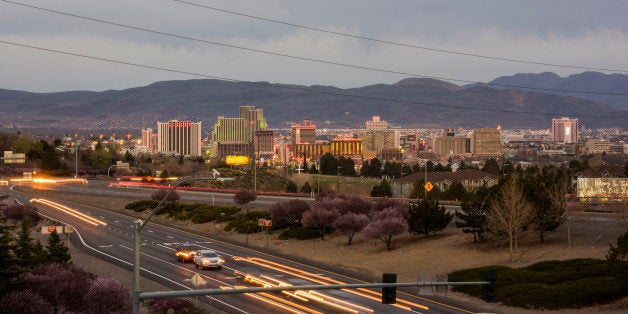
It's a Monday in the summer of 2008, and the sun is breaking over the high-desert mountains to the east of Reno. In a large parking lot at the University of Nevada, there is a crowd of nearly 150 gathered, equipped with cups of coffee, faded yawns and early morning stretches. Gradually, an oblong circle forms around a few men dressed in blue jeans, plaid shirts and flip-flops. A few minutes pass and the crowd grows quiet. After a few announcements one of the men pulls a crumpled slip of paper from his pocket, then recites a line made famous by Edward Abbey: "There are no vacant lots in nature." With these words, the circle ceases and becomes a stream of bodies moving toward work trucks and vans bulging with backpacks, hand tools and water coolers. Watching these young men and women climb into the vehicles, you sense that this group hasn't congregated so early to go sightseeing. The tools and packs, the scuffed work boots and Carhartts, the dawn departure, all hint at hard, physical labor and long hours. These crews are headed into the Nevada wilderness to lead various conservation projects as part of their year of national service with the Nevada Conservation Corps.
Luckily, for me, I was one of the men in blue jeans and flip-flops and this was my introduction to national service and AmeriCorps.
Not that I wasn't actively seeking out ways to serve my community: I volunteered consistently throughout college; went to school to become a teacher; worked for the equivalent of peanuts to teach in State Parks; then found my way to the nonprofit world. I've been working with nonprofits and national service programs as a way to serve my community ever since and I can't imagine ever doing anything different. But I also can't help feeling like I missed a window in my young adult life to serve in a different, more intensive way.
Fast-forward seven years from that early morning in a university parking lot. Since then I have had the opportunity to work with, and mentor, hundreds of AmeriCorps members across multiple organizations. Regardless of how many members I meet, there is almost always one common denominator: after a year of service, each individual starts their next journey with invaluable life experience and they are more engaged with their community. They leave their service year with a better understanding of what it means to be an active citizen in our shared democracy and will likely become a life-long ambassador for national service years. Many national service alumni move on with essential job skills and experience that will aid them as they enter their professional lives. But the work being done through national service in the community is equally, if not more, important.
One of the things that truly make the Biggest Little City special is the collaborative nature of small nonprofits and agencies that embrace national service. While each organization has distinct objectives and missions, many embraces innovative approaches to sharing resources, best practices, and institutional knowledge.
As a result of this collaborative nature, at least half a dozen new organizations have been established with national service at their core -- including my own. Without national service programs, many of the vital organizations -- and their services -- that our community has come to rely on would simply not exist today. Through collective and coordinated efforts, national service has had an invaluable impact on northern Nevada's K-12 education systems, providing everything from afterschool mentoring and in-class STEM programming to garden education and support for summer meal programs. National service programs have the proven ability to lift families out of poverty, provide aid and comfort to neighbors and strangers alike, and also protect Nevada's pristine wilderness areas while also making them accessible to enjoy.
Despite all of the great work being done, I know deep down that it is not enough. While I have watched national service efforts in northern Nevada blossom and see new service opportunities created every year, in my experience it is common to have five qualified candidates for every service year opportunity. Which means four of five qualified individuals seeking to serve have to look elsewhere. Simply put, there are not enough national service opportunities in northern Nevada. Furthermore, we cannot rely on AmeriCorps alone to help create new opportunities; it has to be a localized community effort.
To begin to address the service gap in our region, I have co-founded a leadership institution -- set to launch in 2016 -- that will help establish a new model for national service in Nevada. I am here in northern Nevada, still wearing plaid shirts and flip-flops, to make sure everyone has the opportunity that I did not to experience a year of national service and give back to their community.
This is why I am a Franklin Project Ambassador.
This post is part of a series produced by The Huffington Post and the Aspen Institute's Franklin Project in conjunction with Giving Tuesday. The series, which will run for the month of November, features pieces written by Franklin Project Ambassadors, local leaders who are working with community stakeholders in 25 states toward the Franklin Project's vision of making a year of national service -- a service year -- a cultural expectation, common opportunity, and civic rite of passage for every young American. For more on service year opportunities and organizations, visit https://serviceyr.org.